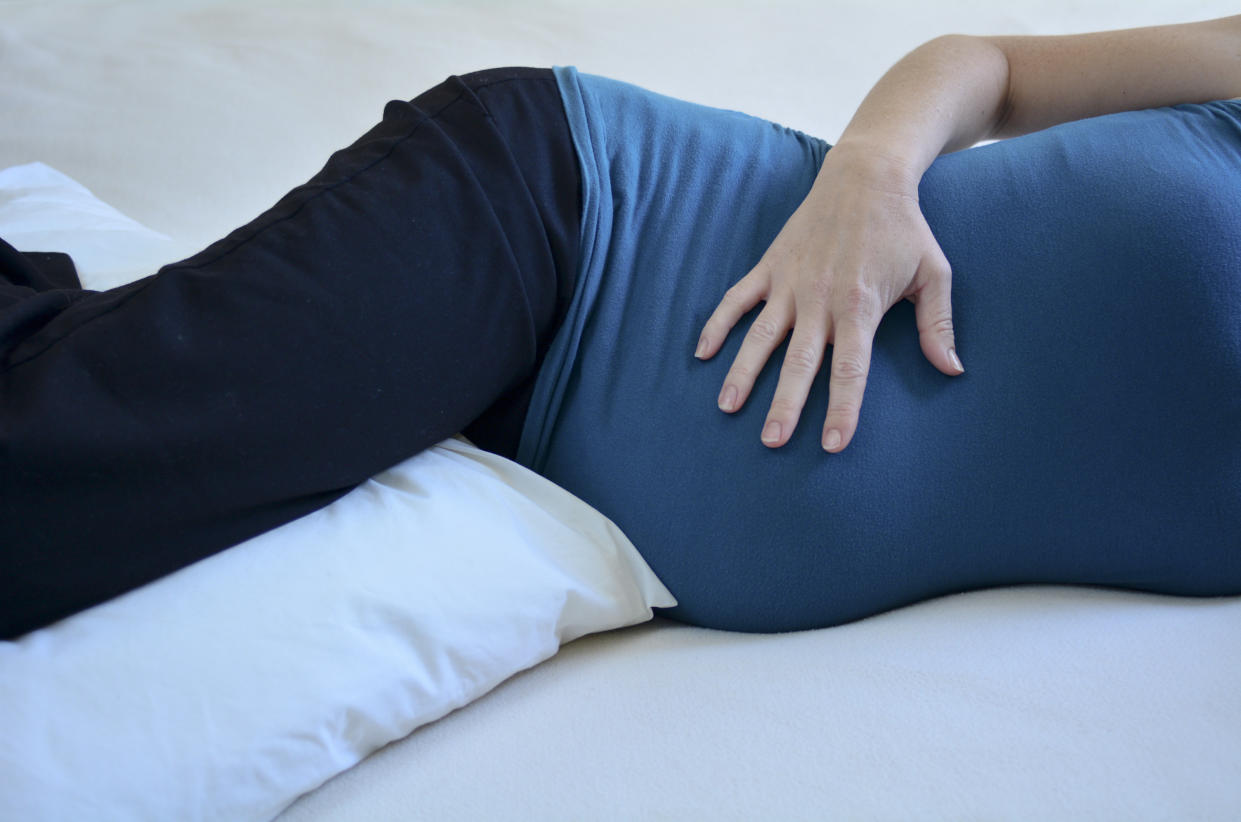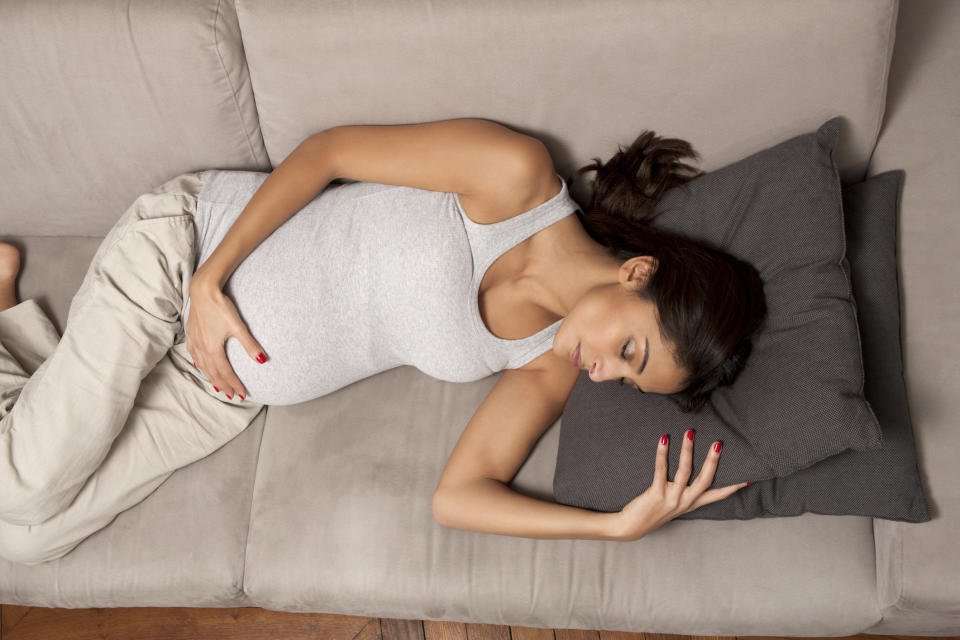Pregnant women are being advised to sleep on their side to cut the risk of stillbirth

Stillbirth. It’s that horrific thought that strikes fear in the hearts of all pregnant women. But tragically it does happen. According to recent statistics, around 1 in 225 pregnancies in the U.K. ends in stillbirth.
And now new research has revealed that the risk of stillbirth could be doubled if pregnant women go to sleep on their back in the third trimester.
The Midlands and North of England Stillbirth Study (MiNESS) found that if all moms-to-be slept on their side from 27 weeks onward, there would be a 3.7 percent decrease in stillbirths, which could save the lives of up to 100,000 babies a year worldwide.
The research found that women who go to sleep on their back have a 2.3-fold increased risk of late stillbirth, after 28 weeks’ gestation, compared with women who go to sleep on their side.
The MiNESS study, published in the British Journal of Obstetrics and Gynaecology (BJOG), is the largest of its kind, and confirms findings from smaller studies in New Zealand and Australia.
The reasons why the risk is increased are not conclusive, but there is a lot of data to suggest that when a woman is lying on her back, the combined weight of the baby and womb puts pressure on blood vessels, which can then restrict blood flow and oxygen to the baby.
Of course, moms-to-be will want to do everything in their power to try to reduce the risk of stillbirth, but experts are keen to stress that the position in which a woman falls asleep is the most important, and pregnant women should not worry if they find themselves on their back when they wake up.
Alexander Heazell, clinical director at the Tommy’s Stillbirth Research Centre at St Mary’s Hospital in Manchester, England, who led the U.K.-focused research, advises women in their third trimester to try to go to sleep on their side for any episode of sleep, including daytime naps.
“What I don’t want is for women to wake up flat on their back and think ‘Oh my goodness, I’ve done something awful to my baby.’ The question that we asked was very specifically what position people went to sleep in, and that’s important, as you spend longer in that position than you do in any other.
“And also, you can’t do anything about the position that you wake up in, but you can do something about the position you go to sleep.”

The advice coincides with the launch of the Sleep On Side campaign, led by the charity Tommy’s, which aims to educate women about the risk of going to sleep on their back in late pregnancy.
The charity has put together some suggestions to help women go to sleep on their side, including putting pillows behind you to prevent turning onto your back, checking your position if you wake in the night and then going back to sleep on your side, and napping on your side as well.
Read more from Yahoo Lifestyle:
Follow us on Instagram, Facebook, and Twitter for nonstop inspiration delivered fresh to your feed, every day.

